Test Bank For Marriages, Families, and Relationships: Making Choices in a Diverse Society, 11 edition: Mary Ann Lamanna
$38.00
Name: Marriages, Families, and Relationships: Making Choices in a Diverse Society
Author: Mary Ann Lamanna
Edition: 11
ISBN-10: 1111301549
ISBN-13: 978-1111301545
- Description
- Reviews (0)
Description
You will receive this product immediate after placing the order
Marriages, Families, and Relationships: Making Choices in a Diverse Society
Marriages, Families, and Relationships: Making Choices in a Diverse Society Mary Ann Lamanna
Marriages, Families, and Relationships: Making Choices in a Diverse Society Mary Ann Lamanna 11
Marriages, Families, and Relationships: Making Choices in a Diverse Society Mary Ann Lamanna 11 Test Bank
Test Bank For Marriages, Families, and Relationships: Making Choices in a Diverse Society, 11 edition: Mary Ann Lamanna Download
***THIS IS NOT THE ACTUAL BOOK. YOU ARE BUYING the Test Bank in e-version of the following book***
Name: Marriages, Families, and Relationships: Making Choices in a Diverse Society
Author: Mary Ann Lamanna
Edition: 11
ISBN-10: 1111301549
ISBN-13: 978-1111301545
Type: Test Bank
– The test bank is what most professors use an a reference when making exams for their students, which means there’s a very high chance that you will see a very similar, if not exact the exact, question in the test!
– The file is either in pdf, doc, rtf or zipped in the package and can easily be read on PCs and Macs.
– Delivery is INSTANT. You can download the files IMMEDIATELY once payment is done.
We also faced similar difficulities when we were students, and we understand how you feel.
But now, with the Marriages, Families, and Relationships: Making Choices in a Diverse Society 11 Test Bank, you will be able to
* Anticipate the type of the questions that will appear in your exam.
* Reduces the hassle and stress of your student life.
* Improve your studying and also get a better grade!
* Get prepared for examination questions.
* Can save you time and help you understand the material.
This is the quality of service we are providing and we hope to be your helper.
Delivery is in the next moment. Test Bank is accurate.
Prepare to receive your Marriages, Families, and Relationships: Making Choices in a Diverse Society 11 Test Bank in the next moment.
ISBN-10: 1111301549
ISBN-13: 978-1111301545
If you have any questions, or would like a receive a sample chapter before your purchase, please contact us at inquiry@testbanksafe.com
Marriages, Families, and Relationships: Making Choices in a Diverse Society
Marriages, Families, and Relationships: Making Choices in a Diverse Society Mary Ann Lamanna
Marriages, Families, and Relationships: Making Choices in a Diverse Society Mary Ann Lamanna 11
Marriages, Families, and Relationships: Making Choices in a Diverse Society Mary Ann Lamanna 11 Test Bank
Test Bank For Marriages, Families, and Relationships: Making Choices in a Diverse Society, 11 edition: Mary Ann Lamanna Download
CHAPTER 2
EXPLORING RELATIONSHIPS AND FAMILIES
LEARNING OBJECTIVES
-
At the end of this chapter, the student should be able to do the following:
1. Be familiar with the “blinders of personal experience” in family science research.
2. Understand theoretical perspectives, starting with the family ecology perspective.
3. Define and understand the family life course development framework.
4. Explain the structure-functional perspective in family science.
5. Discuss interaction-constructionist views of the family.
6. Be familiar with the exchange theory and its contributions to family science.
7. Explain family systems theory and how the family is viewed through this lens.
8. Define conflict, feminist and biosocial theoretical perspectives in family science.
9. Know the basics of attachment theory as it pertains to the study of the family.
10. Be familiar with the methods of data collection used in ethical scientific investigation.
LECTURE OUTLINE
I. Overview
A. Overview
1. Our beliefs about families based on our own personal experience may not tell the whole story and may misrepresent the actual experiences of families.
2. The way to a clear understanding of all families is through scientific investigation via scientific methods.
B. The Blinders of Personal Experience
1. We often assume our own family is “normal” or “typical.”
2. We often are highly committed to the view of family life that is shaped by our experiences.
C. Scientific Investigation: Removing Blinders
1. Science is based on systematic observation and empirical evidence.
2. The scientific method can overcome researchers’ biases.
3. Scientists are expected to follow certain norms, including honesty.
II. Theoretical Perspectives of the Family
Theoretical perspectives or theories contain concepts that help identify and explain specific aspects of family behavior. Theoretical perspectives or theories vary in what each may see as important and significant about families.
A. The Family Ecology Perspective.
1. This perspective explains how a family influences and is influenced by the environments that surround it.
2. This theory focuses on how government policies—as part of the socio-cultural environment—affects families and how families can influence the environments that affect them.
3. Put another way, the family ecology model is concerned with family policy—all the procedures, regulations, attitudes, and goals of government that affect families.
4. A strength of this theory is that it sensitizes us to significant socio-cultural issues, like globalization, that may not be addressed by other theories.
5. A weakness of this theory is that its coverage is so broad that virtually nothing is left out, or, put differently, borders on the truism that ultimately everything affects everything else, and vice versa.
B. The Family Life Course Development Perspective
1. This theory focuses on how families change over time.
2. It is limited because it assumes all families are similar and traditional.
3. It assumes almost everyone marries for a lifetime; that the patterns of the life cycle are highly predictable.
C. The Structure-Functional Perspective
1. This theory focuses on the functions performed by the family as a social institution.
a. to raise children responsibly
b. to provide economic support
c. to give emotional security
2. It is limited in that there is a tendency to assume the traditional family pattern is normative and thus, because it “persists or continues” must be more “functional” for society.
D. The Interaction-Constructionist Perspective
1. This theory focuses on the interactions between family members.
2. It is interested in how self and family identities develop as a result of family interactions.
3. It assumes there are no common family patterns because families are composed of unique personalities who interact with distinct patterns of interaction.
4. It is limited in that it neglects the social environment, overlooks conflict, and assumes family interactive patterns are similar across all societies.
E. Exchange Theory
1. This theory focuses on the exchange of resources (rewards and costs) between family members.
2. It examines how resource transactions form and stabilize relationships.
3. It proposes that relationships will thrive when they are based on equitable exchanges and will suffer and/or dissolve when exchanges are one-sided.
4. It has been criticized for its failure to recognize the family in emotional terms.
F. Family Systems Theory
1. This theory views the family as a whole that is more than the sum of its parts (members).
2. As a system (comparable to a computer or human body), families seek to maintain equilibrium.
3. It proposes that a change in any part of the system (family member) or in the social environment will affect all other parts of the system.
4. Physical and psychological boundaries define who is in or out of the system and regulate the flow of information and feedback with other related systems.
5. It has been criticized for its lack of specificity, its failure to recognize class, race, and ethnicity, and its portrayal of family conflict as a system dysfunction.
G. Conflict and Feminist Perspectives
1. The central focus of feminist perspectives is on gender issues, bringing attention to women and their experiences.
2. Like the broader conflict perspective, feminist perspectives examine the role of power within family relationships as well as the effects of politics and the economic organization of the larger society on the family.
-
Feminist theory analyses of the family (including the division of labor) emphasize the sex-gender system in which men have more power than women.
-
Feminist perspectives are under fire from conservatives for allegedly contributing to the breakdown of family.
H. The Biosocial Perspectives
1. The biosocial perspectives on the family, also termed evolutionary psychology, are characterized by concepts linking psychosocial factors to physiology, genetics, and evolution.
2. Biolosociologists point out that biological propensity, or predisposition, does not mean that a person’s behavior cannot be influenced or changed by social structure.
3. Social science researchers are doing some interesting work from a biosocial perspective, although their positions are sometimes controversial.
I. Attachment Theory
1. Counseling psychologists often analyze individuals’ relationship choices in terms of attachment style.
2. A person’s general style of attaching to others develops during infancy and childhood, based on the child’s attachment to primary caretakers.
3. The three basic attachment styles are secure, insecure/anxious, and avoidant.
4. A person unconsciously applies their attachment style to adult relationships in later life. Although difficult, one’s attachment style can be changed.
III. Doing Family Research
A. Basic Principles and Data Collection Techniques
Scientific investigation involves collecting data systematically through a variety of techniques.
1. Historical and Cross-Cultural Data
a. Historical research examines demographic, economic, legal records, and historical documents for analysis of the family.
b. Cross-cultural studies can provide an interesting picture of family behaviors across different cultures.
2. Cross-sectional and Longitudinal Studies
a. Cross-sectional research gather data just once, and a certain point in time.
b. Longitudinal studies gather information on individuals or families over a long period of time.
3. Deductive versus Inductive Reasoning
a. Deductive reasoning begins with a hypothesis, and gathers data to test that hypothesis (generally through quantitative research methods).
b. Inductive reasoning begins with observation, and eventually produces generalizations (often using qualitative research methods).
4. Quantitative versus Qualitative Research
a. Quantitative research gathers, analyzes, and reports data that can be quantified or understood in numbers.
b. Qualitative research gathers, analyzes and reports data primarily in words or stories.
5. Interviews, Questionnaires and Surveys
a. These can include include face-to-face or telephone interviews, distributed questionnaires, or web-based questionnaires.
b. Representative samples are needed so that results can be generalized to other persons not in a sample.
c. People do not always respond to surveys honestly (give normative answers) and real-life responses are not guaranteed.
6. Naturalistic Observation
a. While living or spending extensive time with families, researchers carefully record activities, conversations, and other aspects of family life.
b. Focus of technique is to identify family interrelationships and communication patterns and draw implications for understanding overall family behaviors; focus groups are one form of naturalistic observation.
c. Although setting is natural, technique requires a lot of researcher time and the conclusions may be highly subjective.
7. Laboratory Observation and Experiments
a. In laboratory observations, behaviors are measured under controlled conditions.
b. Participants in experiments are randomly assigned to treatment and control groups to determine if specific treatments are effective.
c. Although experiments provide direct observation of human behavior, due to laboratory settings they are artificial situations that might not represent the true behaviors observed in real life situations.
8. Clinicians’ Case Studies
a. These are documented reports by clinicians who see individuals, couples, and families over a lengthy period of time.
b. They provide realistic and strong detail of communication patterns and other interactions between family members, but how clinicians view individuals and families is highly subjective.
B. The Ethics of Scientific Research
1. To accomplish high ethical standards, most research plans must be reviewed by an IRB (institutional review board).
2. Ethical standards include informed consent, lack of coercion, protection from harm, confidentiality of data, and the possibility of compensation for participants.
CLASSROOM DISCUSSION AND LECTURE SUGGESTIONS
1. The text identifies the most basic functions of the family in an advanced industrialized society. Families are responsible for reproduction, economic support, and emotional security. Expand on this material of family functions and structure-functional theory. Identify, apply, and analyze with students other functions of the family that have been performed but have changed throughout history. A lead-in to the lecture could be that:
Critics of the American family have argued that a major reason for the ‘breakdown” of the family today is that the family has increasingly lost many of its functions. Throughout history, the family has been the major social institution, but with increasing specialization and complexity of modern society, the functions of this institution have become fragmented, with many now performed by other agencies.
Family Functions
a. economic – the family used to be a self-sufficient unit in which members consumed primarily what they produced. Today, the family earns a living outside the home, pools resources, and makes consumption decisions for food, housing, clothing, shelter, health care, etc.
b. protection – in the family, the father used to be the parent who provided physical protection for his family. Today it may be the father or other relatives and significant others. Throughout history, children have provided social and economic protection to their parents throughout old age.
c. education – the family performed the basic function of education, not only of the young child, but also of older children in the way of vocational training and homemaking. Parents today may play a critical role in developing skills that are important for school readiness, values education, and recreational skills.
d. religious – evidence that the family performed and continues to perform the religious function is seen by grace at meals, family prayers, church and Sunday school attendance, and the reading together of passages in the Bible. Today this may also include values training.
e. recreation – the recreation function used to be performed by families at the homestead of some family or within the family, rather than at recreation centers outside the home. Today, families may still perform this function through the activities they choose for their children to do with other children or together as a family.
f. affection – the family has always provided for its members varying degrees of affection, companionship, intimacy and support. This is true for couples as well as for children and other relatives.
g. procreation – it is within the family that the procreation of children is condoned and the family name passed on through the generations.
h. adaptation – it is within the family that members help one another cope with change and deal with stress and crises.
Be the first to review “Test Bank For Marriages, Families, and Relationships: Making Choices in a Diverse Society, 11 edition: Mary Ann Lamanna”
You must be logged in to post a review.

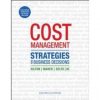
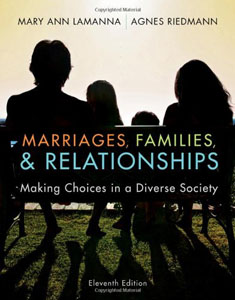
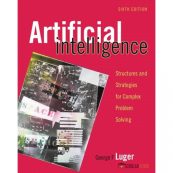
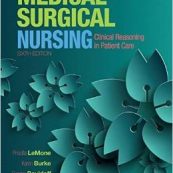
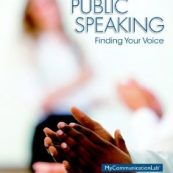

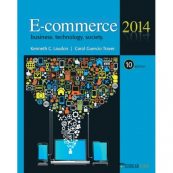
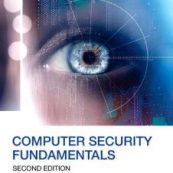
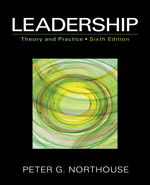
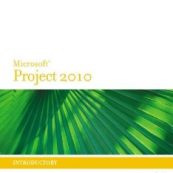
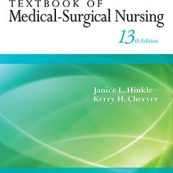
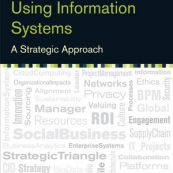
Reviews
There are no reviews yet.